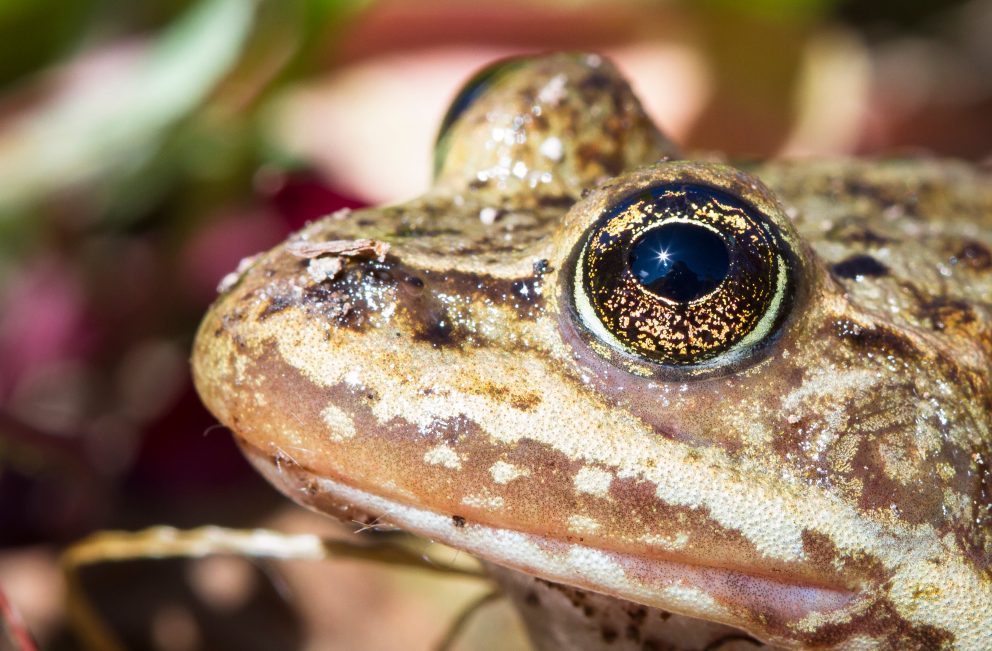- SCIENTIFIC NAME
- Rana luteiventris
- CLASSIFICATION
- Amphibian
- LIFE SPAN
- 3-13 Years
- SIZE
- 3-4” | 0.1-0.22lbs
- STATE CONSERVATION STATUS
-
- Priority Species
- State Protected
- FEDERAL CONSERVATION STATUS
- Least Concern
- GAME STATUS
- Non-Game
- Washoe
- Humboldt
- Pershing
- Churchill
- Mineral
- Lyon
- Douglas
- Carson City
- Storey
- Elko
- Lander
- Eureka
- White Pine
- Esmeralda
- Nye
- Lincoln
- Clark
Habitat & Range
In Nevada, these frogs occur in three geographically separated subpopulations in the Jarbidge, Independence, Ruby, and Toiyabe Mountains. The Columbia Spotted Frog is dependent on permanent, clean, fresh water sources in the form of lakes, ponds, streams, marshes, and wet riparian corridors.
- Lakes and reservoirs
- Marsh
- Springs and springbrooks
Threats
- Habitat Degradation
- Habitat Loss
- Water Diversion
Natural History
Columbia Spotted Frogs lay their eggs in water. They are laid at the surface in large, globular masses of 200 to 500 eggs. Tadpoles are black after hatching and their eyes are located on the top of their head. Tadpoles eat mostly vegetation while adults will eat insects, mollusks, crustaceans, and spiders night or day. They are very opportunistic feeders and use their long, sticky tongues to catch their prey. This amphibian doesn’t have many ways in which to defend itself from predators, but its coloring helps it to blend into its surroundings. Gopher snakes, herons, and bullfrogs are common predators of adult frogs. Tadpoles are often consumed by dragonfly nymphs, aquatic beetles, fish, and garter snakes.
Fun Facts














